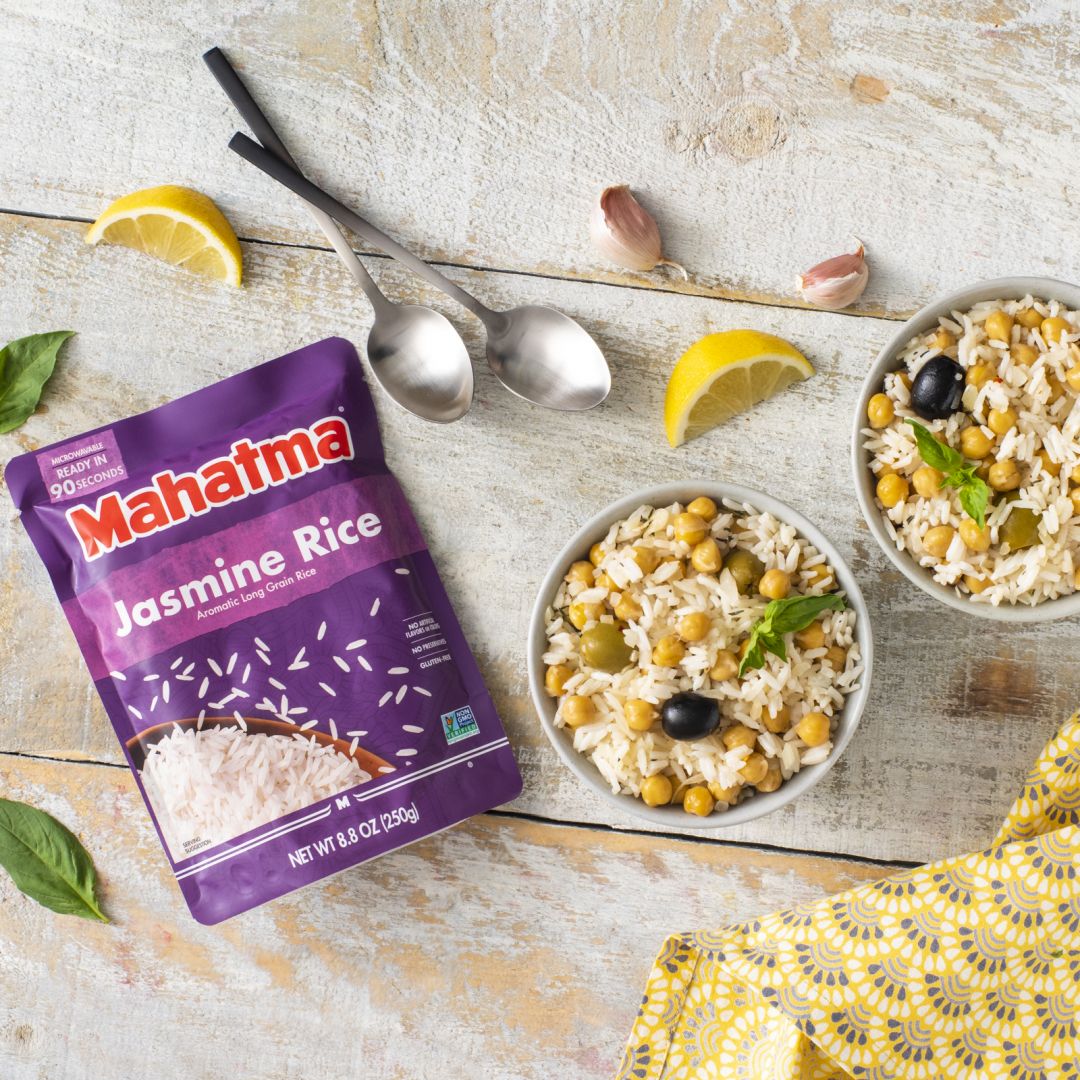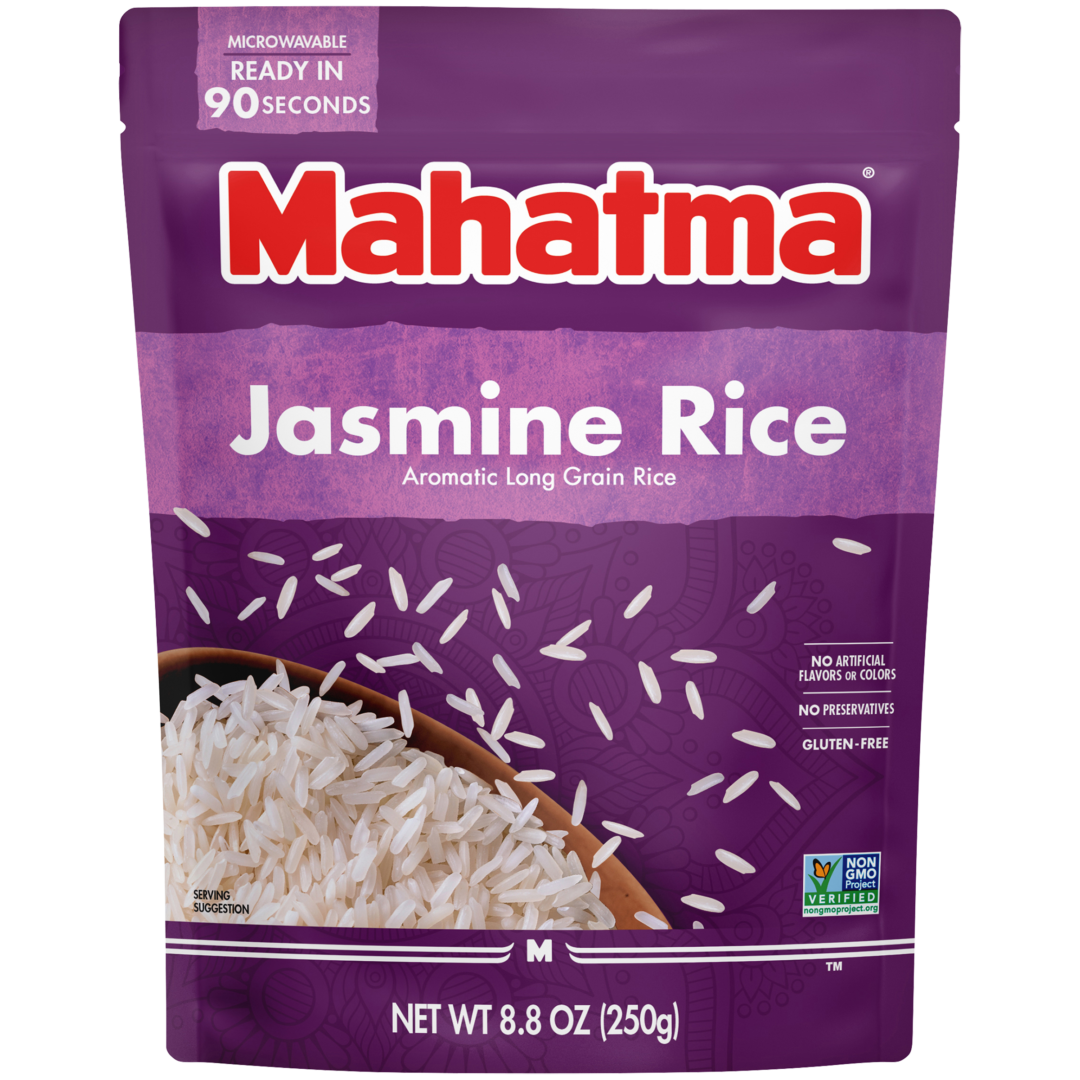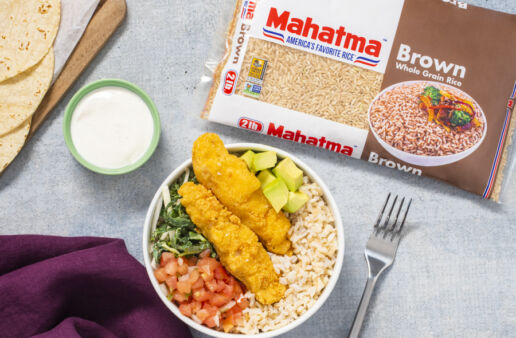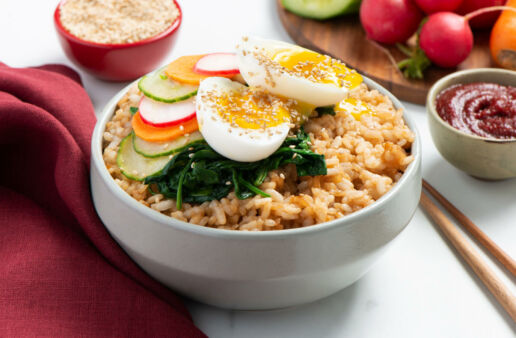
Mediterranean Rice Bowl
Instructions
This speedy skillet dish is packed with veggies and flavor.
Step 1
In a large skillet set over medium heat, add oil. Cook onions and garlic for 3 to 4 mins or until starting to soften. Stir in olives, thyme and chili flakes. Cook for 5 to 8 mins or until well coated and fragrant.
Step 2
Stir in rice, chickpeas, lemon juice and 2 tbsp water. Cook, stirring often, for 10 to 12 mins or until rice and chickpeas are heated through.
Step 3
Season with salt. Stir in basil. Garnish with lemon wedges.
Recipe Tip
Turn recipe into a power bowl by topping with tomatoes, cucumber, chicken, and avocado.
Cooking with Thyme
Thyme is a herb with small, pungent leaves and thin, woody stalks that is quite fragrant. This herb is readily available all year long in most stores in both fresh and dried forms. It has long been a main ingredient in southern European and Mediterranean cuisines.
Tomatoes, beans, and beef go nicely together with thyme. It serves as the primary component in the traditional French herb blends Herbes de Provence and Bouquet Garni. Meat, stews, and soups are typically flavored with these herb mixtures. Thyme is a common ingredient for lamb dishes in Mediterranean cooking because it softens the occasionally gamey flavor of lamb. Thyme is the primary component in Za’atar, a common herb mixture used in Mediterranean cooking. Moreover, thyme is used to enhance tea, cheese, and lentil dishes.
Thyme is a great addition to omelettes and egg strata since it goes so well with eggs, tomatoes, and cheese. This herb can be found in a blend of chicken seasonings and is also a great way to season poultry.
Preparing Fresh Thyme
The leaves must be separated from the stem when “fresh thyme” is specified in a recipe. Simply hold the sprig at the top with one hand, pinch the sprig at the top with the other hand, and then glide those fingers down the stem, pulling off the leaves as you go, to remove the leaves off a sprig of fresh thyme. The leaves will easily separate. Fresh thyme leaves are typically not required to be chopped because they are so little. When the stem is young and flexible, it may be too difficult to strip the leaves off the stem, therefore this is the exception. In this case, it is perfectly fine to chop the entire sprig and add it to the recipe.
Unlike many other types of fresh herbs, fresh thyme can be added early on in the recipe. The herb withstands and benefits from long cooking times, and will slowly infuse its flavor into the dish.
Using Dried Thyme
In many situations, dried thyme can be used in place of fresh because it keeps a lot of the fresh thyme’s flavor. Nevertheless, because dried thyme has a considerably stronger flavor than fresh, you should only use about one-third as much dried thyme as is asked for in the recipe. It should be incorporated into the recipe towards the start, as is the case with most dried herbs.
Other Recipe Ideas
If you are looking for a new easy side dish tonight that goes great with any main, try our jasmine coconut rice recipe.






